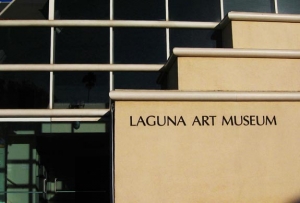
LAGUNA BEACH, CA—Best Kept Secret: UCI and the Development of Contemporary Art in Southern California, 1964-1971 will be a major exhibition at Laguna Art Museum October 29, 2011–January 22, 2012.
This exhibition will take place in conjunction with Pacific Standard Time: Art in LA 1945-1980 which is a collaboration of more than 60 cultural institutions across Southern California that are presenting thematically linked exhibitions and programs designed to celebrate the region’s vibrant post-WWII art scene.
For Laguna Art Museum’s exhibition Best Kept Secret: UCI and the Development of Contemporary Art in Southern California, 1964-1971, artist Tony DeLap is serving as the project consultant and Grace Kook-Anderson is the coordinating curator. A catalogue will be produced in conjunction with this exhibition with Peter Frank as the main essayist.
From its inception in 1965 through the early 1970s very few exhibitions and little research has been done on the contributions of the art department at University of California, Irvine (UCI) to the development of contemporary art. However, during this period, UCI was the hub for the most advanced artists, students, and art writers on the West Coast. In 1964, John Coplans was named director of the University Art Gallery and recruited artists to come on board as art faculty. At the same time, Coplans was a writer/editor for Artforum and moved its headquarters from San Francisco to Los Angeles. which is a collaboration of more than 60
Coplans was instrumental in bringing Philip Leider (editor in chief of Artforum, 1962-1971), Barbara Rose (author of American Art Since 1900), and art historian Alan Solomon to the UCI faculty. Tony DeLap, one of the founding members of the art faculty, and John McCracken, relocated from San Francisco to teach there. Others drawn to the faculty included Vija Celmins, Robert Irwin, Craig Kauffman, John Mason, and Ed Moses. MFA students at the time included Michael Asher, Chris Burden, Marcia Hafif, Jay McCafferty, Alexis Smith, and Barbara T. Smith. Artists like James Turrell (DeLap’s studio assistant), Frank Stella (at the time Barbara Rose’s husband), David Hockney, and Bruce Nauman all contributed to the cultural ambiance of the campus at the time as well.
1971 marks a significant end year of exploration for this exhibition. With creativity thriving significantly for six years on an expansive new campus, artists converged, new galleries were created, and developments for new models of artist-run, alternative spaces were taking shape; all before the City of Irvine’s incorporation into Orange County. 1971 also marks the Duchamp Festival at UCI organized by art historians Moira Roth and Barbara Rose. The festival included an exhibition, symposium, and a set of performances organized by faculty and students.
Laguna Art Museum’s exhibition Best Kept Secret will bring together the work of these seminal artists from this critical period, drawing connections among their work and contextualizing it in light of other historical developments in California and in the rest of the nation. In addition, Best Kept Secret will examine the impact UCI had on the roots of the Finish Fetish and Light and Space movements, performance, video, and conceptualism, as well as the development of the art programs at the University of California, San Diego, and the California Institute of the Arts.
The Museum’s publication for this exhibition will draw on primary interviews; ephemera and documents in the archives of the artists and writers of the time; the archive of the University of California, Irvine; the Archives of American Art; and the Getty Research Institute.